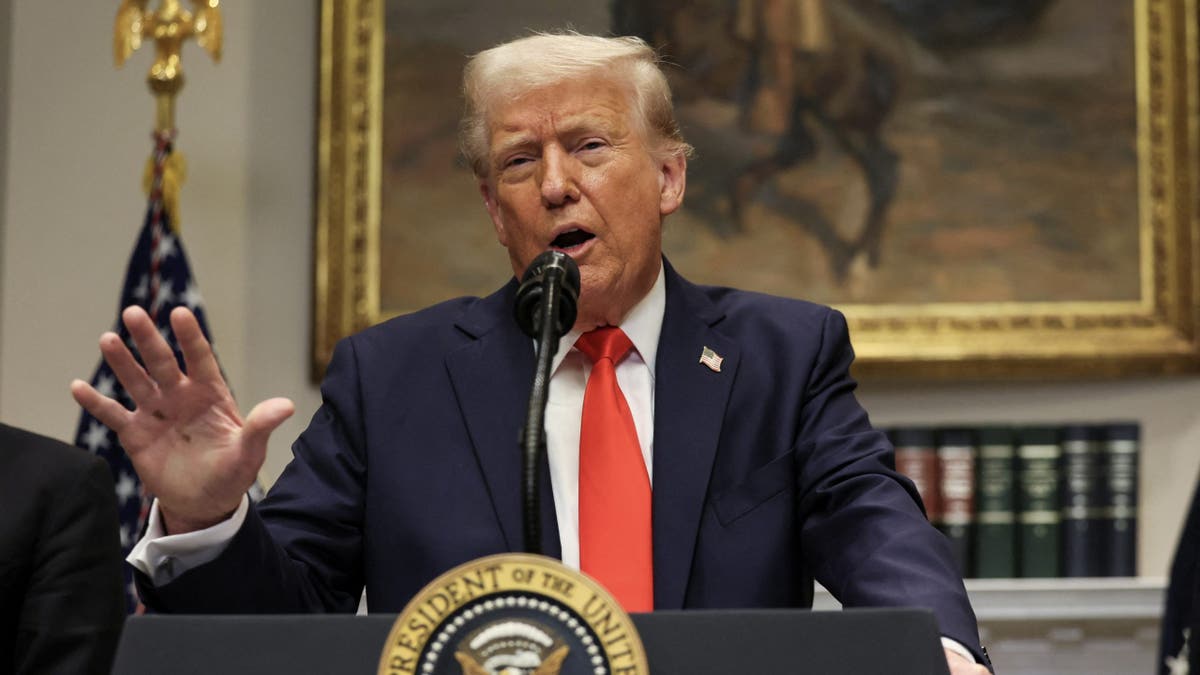
Trump Set to Address Congress Amidst Divided Approval Ratings
President Donald Trump is preparing to deliver a primetime address to a joint session of Congress on Tuesday night, a highly anticipated event touted as an opportunity for the president to "TELL IT LIKE IT IS." The speech, previewed as "The Renewal of the American Dream," marks his first major address to Congress during his second presidential administration, a moment intended to highlight the whirlwind of activity that has characterized his initial six weeks back in the White House.
Trump himself has amplified the anticipation, declaring "TOMORROW NIGHT WILL BE BIG" in a social media post. He has also boasted about his "Best Opening Month of any President in history," pointing to a series of accomplishments, albeit some steeped in controversy, since his inauguration on January 20th.
Fox News will provide live coverage of Trump’s address, underscoring the significance placed on this national address. However, the context surrounding the speech is one of deep division, as recent polls paint a picture of a nation starkly split on Trump’s performance thus far.
While some surveys indicate an approval rating just above water, others show disapproval outweighing approval. For instance, a Marist College poll for PBS News and NPR places Trump at 45% approval and 49% disapproval. A CNN survey echoes this sentiment, registering a 48% approval rating against a 52% disapproval. In contrast, a CBS News poll suggests more positive territory, reflecting the inherent volatility and partisan skew present in contemporary polling.
The defining characteristic of these polls is a massive partisan divide. Democrats overwhelmingly disapprove of the president’s actions, while Republicans offer resounding support. This mirrors a trend established during Trump’s first term and highlights the increasing polarization of American politics.
Despite the divisions, there is a notable difference between Trump’s current standing and his initial foray into the presidency. While he began 2017 in negative approval territory and remained underwater throughout his first four years, his second term has seen a more positive start.
Daron Shaw, a politics professor and chair at the University of Texas and a member of the Fox News Decision Team, emphasizes that Trump now enjoys rock-solid Republican support, a stark contrast to the internal party challenges he faced during his first administration. "He never had support among Democrats in the first administration, but he also had some trouble with Republicans," Shaw notes. "That’s one acute difference between 2017 and 2025. The party’s completely solidified behind him."
Trump’s rapid pace in the opening weeks of his second term is undeniable. He has signed a staggering 82 executive orders, surpassing the rate of any recent presidential predecessors. These actions, fulfilling major campaign promises, showcase his executive power and swiftly imprint his vision on the federal government. Measures include a high-profile crackdown on immigration, the imposition of significant tariffs on trading partners like Canada and Mexico, and the freezing of foreign aid to Ukraine.
Lee Miringoff, director of the Marist Institute for Public Opinion, describes this approach as a "flooding-of-the-zone," with multiple significant actions occurring daily, leaving the public struggling to keep pace. "We’re just seeing a lot of things happening with little time for the public to digest. The net effect of it all is there’s a sense, on the part of the public, that some things are moving just a little too fast."
Despite a relatively improved start compared to his first term, Trump’s approval ratings remain lower than those of his recent predecessors at a similar point in their presidencies.
Shaw points out that neither Trump nor former President Joe Biden enjoyed a traditional honeymoon period with overwhelming approval. "This is not like the honeymoon period that we historically expect presidents to enjoy….Historically, the other side gives you a little bit of leeway when you first come in. That just doesn’t happen anymore."
Biden’s approval ratings initially hovered in the low- to mid-50s before plummeting in the late summer and autumn of 2021 due to the widely criticized withdrawal from Afghanistan, rising inflation, and a surge of migrants at the southern border. His approval remained underwater for the remainder of his presidency. "He just got crippled and never recovered," Shaw observes.
As Trump’s approval ratings slightly decline since his return to the White House, veteran political scientist Wayne Lesperance, president of New England College, anticipates further slippage as the changes in Washington begin to impact everyday lives. "The honeymoon is over, and hes actually governing, and that typically does bring numbers down," Lesperance said. "I expect the numbers to continue to slip as the changes in Washington really do begin to impact peoples everyday lives."
Shaw highlights specific issues where Trump holds an advantage. "Trump’s rating on the economy is about minus four, which is 25 points better than Biden. He’s above water on immigration. His best issue right now is crime. He’s plus ten on crime."
However, the ever-present concern of inflation, which played a crucial role in Trump’s return to the White House, remains a critical factor in his political future. "If prices remain high, he’s going to have trouble," Shaw warns.
The upcoming address to Congress provides Trump with a critical platform to address these challenges, connect with the American people, and shape the narrative surrounding his second term. Whether he can bridge the deep partisan divide and capitalize on his strengths remains to be seen.
